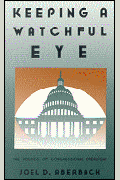Editor’s Note: This paper was released as a part of the January 13 Fostering Growth through Innovation event.
Executive Summary
Despite a well-known litany of challenges to U.S. economic growth, employment and long-term fiscal stability, the nation’s policy process is in gridlock. Numerous organizations of all political persuasions have suggested congressional, budgetary and electoral reforms that would make possible more comprehensive and effective approaches to our fundamental economic problems. To improve the effectiveness of Congress, proposed reforms would, for example:
- Create incentives to shorten the appropriations process, require prompt action on presidential nominations, curtail obstructionist filibusters and allow bipartisan majorities to bring bills to the floor of the House and Senate over the objections of committees and party leaders.
- Require that members work in Congress three five-day weeks out of every four, and coordination of House and Senate schedules.
- Promote constructive discussion between Congress and the administration, in full view of the American people, via television.
- Discourage legislators from taking any pledges except the Pledge of Allegiance and their formal oath of office, establish regular off-the-record bipartisan meetings, institute bipartisan seating in full sessions as well as committees, create a bipartisan leadership committee and discourage negative campaigning against fellow members.
Other proposals would specifically address the broken congressional budget process by:
- Establishing five-year budgets for mandatory programs, coupled with enforcement mechanisms to align those programs’ revenues and obligations and with increased transparency.
- Undertaking wholesale reform of the congressional committee structure to eliminate the increasingly meaningless distinction between authorizing and appropriating committees and to remove the major mandatory programs from the jurisdiction of the tax-writing committees.
- Giving proposed presidential spending reductions expedited congressional consideration.
- Using the bipartisan compromise Budget Enforcement Act of 1990, which contributed to better fiscal outcomes for nearly a decade, as a model of process reform.
Recognizing that the current level of political polarization will make it difficult for even the best new rules to succeed, proposals have been advanced to tackle a key underlying cause of excessive partisanship, the structure of the U.S. elections process. Election reform would undoubtedly be slow and difficult; however, the most promising reform options would encourage states to:
- Adopt non-partisan systems for congressional redistricting and institute more “open primaries,” in which independent voters as well as registered party members can participate.
- Adopt innovative voting systems, such as instant runoff voting, in order to give candidates incentives to reach beyond their current base.
- Expand the electorate through various means, in order to bring less committed swing voters into the process.
The Brookings Institution is committed to quality, independence, and impact.
We are supported by a diverse array of funders. In line with our values and policies, each Brookings publication represents the sole views of its author(s).










